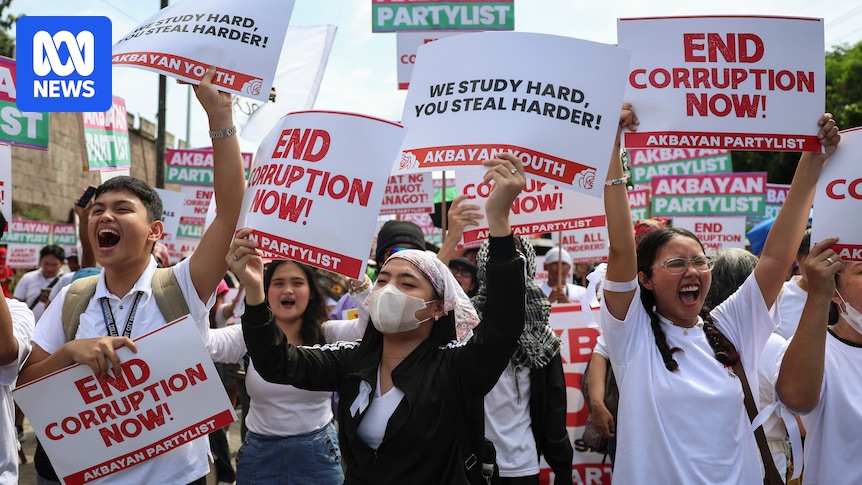
Thousands of Filipinos took to the streets of Manila on Sunday to express their outrage over a burgeoning scandal involving fraudulent flood-control projects that have allegedly cost taxpayers billions. The protest, initially peaceful, descended into chaos as riot police deployed water cannons against young, masked demonstrators who retaliated by hurling rocks and shattering the glass of a police outpost.
Authorities reported the arrest of 72 individuals, including 20 minors, across two separate incidents. The clashes resulted in injuries to at least 39 officers and saw a trailer, used as a barricade, set ablaze. Major Hazel Asilo stated that it remains uncertain whether those detained were legitimate protesters or individuals intent on causing unrest.
Mounting Anger Over Ghost Projects
The scandal, centered on so-called ghost infrastructure projects, has been a growing source of discontent in the Philippines since President Ferdinand Marcos highlighted the issue in a July state of the nation address. This followed weeks of severe flooding, which underscored the urgent need for effective flood control measures. President Marcos has expressed understanding of the public’s frustration, stating last week that he does not fault citizens for their protests.
The day’s events began peacefully with a morning demonstration in a city park, drawing nearly 50,000 participants according to city estimates. Among the attendees was Mitzi Bajet, a 30-year-old designer, who remarked, “It’s very rare for me to go to rallies, but this situation was bad enough that I was really urged to say ‘this is enough.'”
Calls for Accountability
Leading the charge for accountability was Teddy Casino, chairman of the left-wing alliance Bagong Alyansang Makabayan. He emphasized the group’s demands for the return of embezzled funds and the imprisonment of those responsible. Renato Reyes, another organizer, recounted being struck by a rock near the presidential palace and speculated that the masked protesters might be provocateurs or genuinely enraged citizens.
Some demonstrators were seen waving pirate flags, reminiscent of those used in recent Indonesian protests over economic grievances, which resulted in multiple fatalities. According to the AFP news agency, a journalist observed police retaliating by throwing rocks back at the protesters, a claim noted by Major Asilo.
Economic Impact and Political Fallout
The Department of Finance estimates that corruption in these flood-control projects could cost the Philippine economy up to 118.5 billion pesos (approximately $3 billion) from 2023 to 2025. However, Greenpeace suggests the actual figure may be closer to $27 billion. Earlier this month, allegations surfaced implicating nearly 30 members of the House of Representatives and officials from the Department of Public Works and Highways in accepting bribes.
The scandal has already prompted leadership changes in Congress, with House Speaker Martin Romualdez, a cousin of President Marcos, resigning earlier this week as investigations commenced.
Sunday’s protest drew participation from multiple politicians and received backing from the influential Catholic Church, attracting numerous families. “This is not partisan,” asserted Manuel Dela Cerna, a 58-year-old protester, reflecting the widespread frustration across the political spectrum.
Historical Context and Future Implications
The Philippines has a storied history of corruption scandals involving public funds, with high-ranking officials often evading significant jail time. This current scandal, however, has galvanized a broad swath of the population, potentially signaling a shift in public tolerance for corruption.
As the investigation progresses, the focus will likely remain on ensuring accountability and reforming the systems that allowed such extensive corruption to occur. The protests serve as a potent reminder of the public’s demand for transparency and justice, with implications that could resonate throughout the nation’s political landscape.







